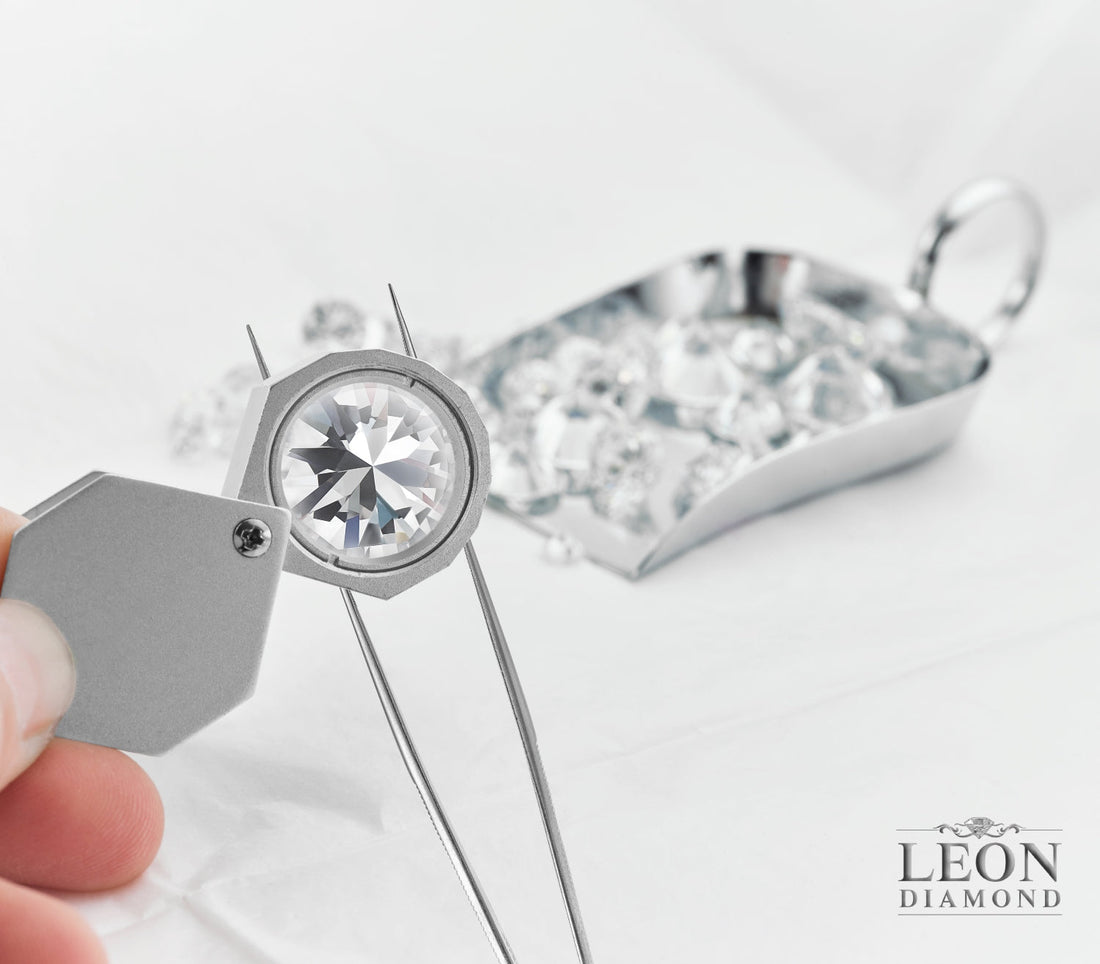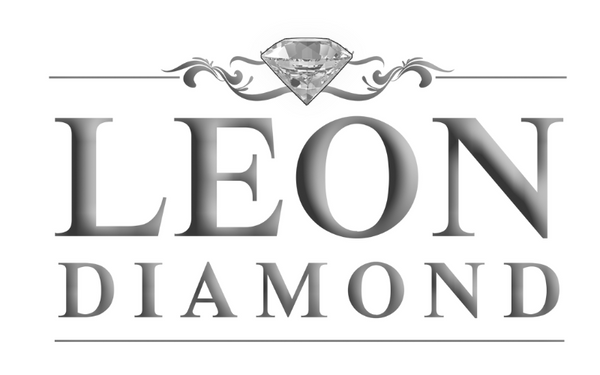
Why Not All Diamonds Are Perfect: Understanding Inclusions
Share
When most people picture a diamond, they imagine a flawless, sparkling gem. In reality, however, perfectly flawless diamonds are scarce. According to the Gemological Institute of America (GIA), fewer than 0.5% of gem-quality diamonds achieve a "flawless" clarity grade under 10x magnification. The majority of diamonds formed deep within the Earth contain tiny internal characteristics, known as inclusions.
These natural features are part of a diamond's unique identity and don't always diminish its beauty. In fact, many inclusions are invisible to the naked eye, and understanding how they impact clarity, value, and durability can help you shop with confidence.
This guide will walk you through what inclusions are, the different types you may encounter, how they affect clarity grades, and how to choose a diamond that balances beauty, durability, and budget without overpaying.
What Are Diamond Inclusions?
Inclusions are internal features or imperfections found inside a diamond. They form naturally as the diamond develops deep within the Earth over millions of years. These features might include small crystals, tiny fractures, or even air bubbles that were trapped during the diamond's growth.
It's essential to understand the distinction between inclusions and blemishes. Inclusions are internal to the diamond, forming part of its structure, whereas blemishes are surface-level marks, such as scratches or chips. In most cases, inclusions are only visible when viewed under magnification, although some can be seen without it.
Think of inclusions as the unique birthmarks of each diamond. Just as no two people have identical fingerprints, no two diamonds have the same set of inclusions. These internal features not only give each stone its individuality but also serve as crucial markers used by gemologists to identify and authenticate diamonds.
Most inclusions are microscopic and require 10x magnification, the standard used by gemological labs like the Gemological Institute of America (GIA), to be visible. However, some inclusions, particularly in lower-clarity grades (I1–I3), can be visible to the naked eye.
Types of Diamond Inclusions

There are several different types of inclusions, and each one affects a diamond in a slightly different way. Factors such as size, location, color, and number all come into play when assessing the impact of an inclusion.
Here are some of the most common types you might see during your search:
|
Inclusion Type |
Description |
How It Affects the Diamond |
|
Crystals |
Tiny minerals or crystals that are trapped inside the diamond. |
May be colored or clear; sometimes visible if prominent or near the center |
|
Feathers |
Small cracks that look like feathers. |
Can weaken the structure if they are large or near the surface |
|
Clouds |
A group of tiny pinpoints that create a hazy look. |
It can affect sparkle if they are dense or spread across the diamond |
|
Pinpoints |
Tiny white or black dots inside the diamond. |
Usually harmless and only noticeable under magnification |
|
Needles |
Long, thin lines that resemble little rods. |
Often invisible to the eye unless very obvious |
|
Knots |
A crystal that reaches the surface of the diamond. |
May affect polish or durability if exposed |
|
Cavities |
Small holes or voids in the diamond. |
Typically rare, but it can impact strength or polish depending on the location |
There are also combinations of these inclusion types, which may appear as wisps or clouds under the surface. Some are harmless, while others may affect how the diamond appears or its durability over time.
How Inclusions Affect Clarity
Clarity is one of the most essential factors in a diamond's quality. It measures how free the stone is from both internal inclusions and surface blemishes. Clarity is part of the "four Cs" of diamonds, along with cut, color, and carat weight.
The clarity of a diamond is graded on a scale that ranges from Flawless to Included. These grades are determined through a trained examination under 10x magnification, where gemologists assess the number, size, position, color, and nature of the inclusions.
Here's a simplified overview of what the primary clarity grades mean:
Grade: What You'll See
- Flawless (FL): No inclusions or blemishes at 10x magnification
- Internally Flawless (IF): No internal inclusions, only minor external marks
- Very Very Slightly Included (VVS1/VVS2): Inclusions are extremely difficult to spot, even under magnification
- Very Slightly Included (VS1/VS2): Inclusions are still small, hard to see, and rarely visible to the naked eye
- Slightly Included (SI1/SI2): Inclusions are easier to spot and may be visible without magnification in SI2
- Included (I1/I2/I3): Inclusions are obvious, often visible without tools, and may impact appearance, brilliance, or durability
Keep in mind that a lower diamond clarity grade doesn't always mean a diamond will look flawed. Many diamonds that are labeled SI1 or even SI2 appear clean to the naked eye, especially when viewed from the top once set in a ring.
Do Inclusions Affect Value and Beauty?
The short answer is yes. Diamonds with fewer or less visible inclusions are more valuable, assuming cut, carat, and color are equal. Flawless and near-flawless stones are rare, which makes them highly desirable and priced at a premium. Inclusions can reduce brilliance, transparency, and perceived quality, lowering market value.
Holmes & Crowningshield (1981) affirm this in the Springer Handbook of Mineralogy and Gemology: "Inclusions and color in diamonds materially affect the per-carat price. The clearer and more brilliant the diamond, the more value is assigned in the market context."
Finding Excellent Value
1. VS1 and VS2 Clarity Ranges
- Visually, nearly identical to higher‑clarity stones.
- According to a peer-reviewed article from Gems & Gemology, published by the Gemological Institute of America (GIA), diamond pricing increases exponentially with clarity, particularly from VS2 to IF and FL, even though the visual difference is often imperceptible to the naked eye.
- Ideal for buyers seeking quality without overspending.
Why Inclusion Location Matters
1. Hidden vs. Exposed
- Prongs or settings can conceal edge-placed inclusions.
- Central inclusions catch light and draw the eye.
2. Structural Risks
- Surface‑nearing feathers or cavities may chip under impact.
When Inclusions Don't Hurt Performance
1. Tiny, Internal Characteristics
- Most inclusions are microscopic and don't affect sparkle or durability.
2. Rustic & Vintage Appeal
- Some collectors prize visible inclusions for added character.
- Works exceptionally well in heirloom or "raw" style settings.
Being transparent about clarity grades empowers you to strike the ideal balance between a diamond's beauty and your budget. Choosing the right setting can cleverly conceal minor imperfections, ensuring your stone appears flawless. And remember, inclusions aren't always drawbacks; they can lend a diamond its distinctive character and allure.
How to Choose a Diamond with Inclusions

Choosing the right diamond isn't about getting the highest clarity grade. It's about understanding what matters most to you and where you can get the best value without compromising beauty or durability.
Here are a few tips to help guide your decision:
-
Look for "Eye-Clean" Stones
A diamond is considered "eye-clean" when inclusions are not visible to the unaided eye. According to the Gemological Institute of America (GIA), this typically includes diamonds graded VS1, VS2, and often SI1, especially when well-cut. These stones usually appear flawless to most observers and offer significant savings over Flawless (FL) or Internally Flawless (IF) diamonds. -
Know Your Shapes and Cuts
Specific diamond cuts are naturally better at concealing inclusions. Round brilliant cuts have 57–58 facets and strong light return, which helps mask small imperfections like pinpoints or feathers. By contrast, step cuts such as emerald cut or Asscher cut have wide, open tables and linear facets, making inclusions far more visible. For this reason, buyers often choose higher clarity grades for step cuts, while slightly lower grades can still appear eye-clean in brilliant cuts. This is supported by Scott & Yelowitz (2010) in Economic Inquiry: "Clarity affects price differently depending on cut. Inclusions are harder to see in round brilliant and princess cuts, but significantly more visible in emerald, Asscher, and other step cuts." -
Consider where the Inclusion Is Located
An inclusion near the edge of the diamond is easier to hide with prongs or other setting features. A minor flaw in the center may cause it to reflect light differently and draw the eye. Take your time examining the diamond from different angles before making a decision. -
Think About Durability
Most inclusions don't affect the strength of a diamond, but you should be more cautious with certain kinds. For example, a feather or cavity near the edge can weaken the stone over time, especially if it's hit in just the wrong way. -
Always Check the Grading Report
Reliable grading reports from reputable labs provide a detailed view of a diamond's clarity and inclusions. They'll show the type, size, and location of features, which helps you understand exactly what you're buying. This is especially important for diamonds over 1 carat.
Find Your Unique Sparkle Today
Inclusions are a completely natural part of a diamond's structure. They don't necessarily take away from a diamond's beauty or brilliance and can even make a gem feel more unique.
Learning to understand these minor internal marks will help you navigate the diamond buying process with confidence. Instead of chasing the highest grade, you can focus on finding a diamond that looks beautiful, fits your needs, and stays within your budget.
If you're ready to explore an exceptional jewelry collection of natural and lab-grown diamonds with expert guidance, call Leon Diamonds at 212-302-7327 or visit us in the Diamond District of New York City. Let our knowledgeable team help you find the perfect diamond for your story.
Frequently Asked Questions
What are diamond inclusions, and how do they form?
Diamond inclusions are natural internal features, such as tiny crystals, feathers, or clouds, that form as the diamond develops deep within the Earth. They are the diamond's unique birthmarks and are present in nearly all natural diamonds.
Do inclusions affect a diamond's sparkle or beauty?
Most inclusions are microscopic and do not impact a diamond's sparkle or appearance to the naked eye, especially in VS or SI clarity grades. However, large or centrally located inclusions can sometimes affect brilliance or be visible without the aid of magnification.
How do inclusions impact a diamond's value?
Diamonds with fewer or less visible inclusions are rarer and generally more valuable. That said, eye-clean diamonds, where inclusions are not visible to the naked eye, often provide the best balance between appearance and price.
What types of inclusions are most common in diamonds?
Common inclusion types include crystals, feathers, clouds, pinpoints, needles, knots, and cavities. Some inclusions, such as feathers near the surface, may affect the diamond's durability.
Can inclusions make a diamond more likely to chip or break?
Yes, specific inclusions, such as large feathers or cavities near the surface or edge, can make a diamond more prone to chipping if it is impacted. However, most small internal inclusions do not significantly affect durability.
How can I choose a diamond with inclusions and still get great value?
Focus on eye-clean diamonds within the VS1, VS2, or SI1 clarity range. Consider shapes and cuts, such as round brilliants, that conceal inclusions well. You can also use settings to hide inclusions near the gridle. Always review the diamond's grading report to understand the type and placement of inclusions.
